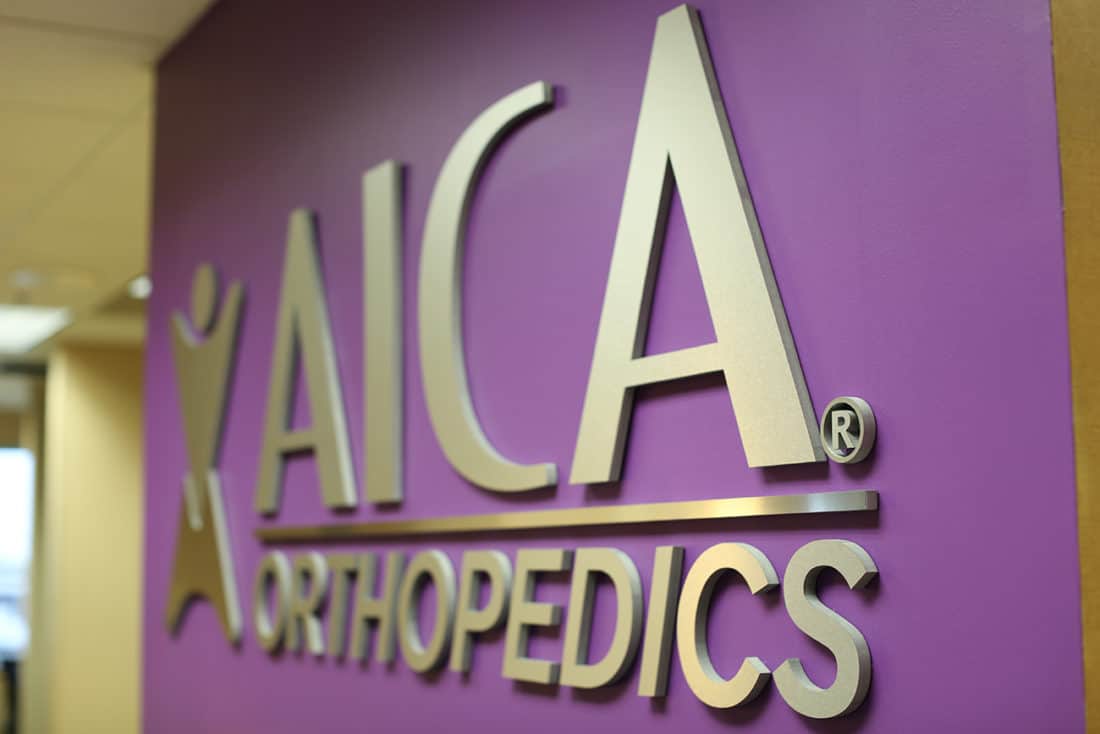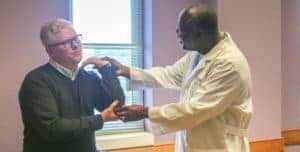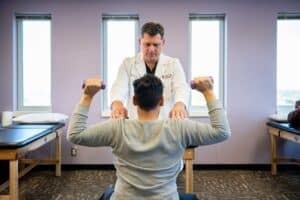Fractures
Most people have suffered from a fracture, or broken bone, at some point in their life. If you have, then you know how painful it can be. Fractures take time to fully heal, and it is important to ensure that they heal properly. Always consult with an Orthopedic Doctor to make sure your bones are healing correctly so you can get back to your normal life once again after the injury. Give our team a call at AICA Orthopedics if you’re dealing with a fracture or broken bone.
Our team at AICA Orthopedics consists of multiple doctors and specialists that will provide an accurate diagnosis and effective treatment based on your situation. Every fracture is unique and needs to be treated based on a number of factors, including the severity of the fracture, type of fracture, where it occurred, and other variables.
When you visit AICA Orthopedics, you’ll visit with one of our doctors that specialize in treating fractures and broken bones for diagnosis and treatment. The diagnosis process includes a physical examination and consultation with a doctor and/or medical specialist and the administration of imaging tests to get an accurate picture of the fracture. From there, your doctor will discuss personalized treatment options for your situation.
What Causes Fractures?

Overuse is another common problem that can cause broken bones. Depending on the type of fracture, broken bones can require specialized treatment to guarantee proper healing. If you have experienced a fracture, an orthopedic specialist at AICA Orthopedics can help.
What to Do When You Get or Witness a Fracture
Every type of fracture (broken bone) will require medical attention of some kind. If you’re not sure if the wound warrants a visit to the emergency room, it’s always best to play it safe and call 911. It’s important to get immediate medical attention if the injured individual is unresponsive or not breathing, is heavily bleeding, bones have pierced the skin, there are signs of numbness or bluish tints of the skin, or you suspect that there is a fracture to the neck, head, or back.
After calling 911, you can move onto performing CPR if there’s no breathing or heartbeat. Carefully apply pressure to the wounded area if there is any bleeding. Immobilize the injured area (but do not try to put the broken bone back into its place). Utilize ice-packs to help reduce swelling and provide some pain relief.
Types of Fractures
Fractures range from minor hairline fractures to severe breaks. When a fracture occurs, you will usually see bruising or swelling of the injured area. More severe fractures may cause deformity of the limb or the bone to break through the skin. If you notice these things, it is important to seek help right away. Common types of fractures include the following:
- Greenstick Fracture – A crack down the side of the bone that doesn’t go all the way through
- Complete Fracture – A fully broken bone
- Stress Fracture – A hairline fracture due to overuse of the bone
- Stable Fracture – A broken bone that is hardly out of place and doesn’t require realignment
- Open or Compound Fracture – A broken bone that breaks through the skin causing an open wound
- Transverse Fracture – A fracture with a horizontal fracture line
- Oblique Fracture – A fracture with an angled pattern
- Comminuted Fracture – A fracture that has broken the bone into three or more pieces
Diagnosing the Type of Fracture
To effectively determine the type of fracture, a doctor will first talk with you about the fracture or broken bone and how you got it. A physical examination of the wound may follow alongside diagnostic imaging tests. Where the fracture took place and whether it’s a minor or severe fracture will determine the type of tests that are administered.
X-rays, MRIs, and CT scans are common imaging tests that will be done to generate an accurate image of the fracture. An x-ray is used to find the exact location and type of fracture that you have. In some cases, an x-ray won’t be enough and a CT-scan or MRI may be administered to view the fracture even closer and in more detail.
These tests are critical in helping a doctor make an assessment of the damage, including the size, location, and type of fracture you have. With this information, a doctor can then provide accurate and personalized treatment suggestions for optimal recovery.
Diagnostics
x-ray
When a bone is broken, tests will need to be run to confirm the nature of the fracture, and the most effective test for getting a visual of broken bones is the x-ray, which shows skeletal injuries.
LEARN MORECT scan
If the x-ray is not able to provide enough detail to treat the fracture properly, a CT scan may be ordered. The CT scan will show a composite of the different cross-sectional images taken by the radiologist.
LEARN MORETreatment of Fractures
Treatment options for broken bones will depend upon the type of fracture that has occurred. The specialists at AICA Orthopedics will know exactly how to treat your fracture for optimal healing. Depending on what type of fracture it is, our orthopedic specialists may have to reset the bone for proper placement. Once the bone is in place, doctors will apply a cast for immobilization to keep the bone in place and to allow for full healing. More serious fractures may require surgery.
At AICA Orthopedics, our surgeons will repair your injury so it can heal correctly. We can provide physical therapy services as well as pain management options both before and after your surgery, and we will follow-up with you regularly to ensure healing is occurring properly. Depending on the type and location of the fracture, other specialists may be recommended during your treatment. For example, a chiropractor might not be able to mend a broken bone, but he or she will be able to help realign the spine and other parts of the body. With these realignments, the body’s range of motion improves and there’s an increased nerve communication from the brain, which can help to reduce pain and improve healing.
If you suspect you’ve experienced a fracture or for more information about treating fractures, contact AICA Orthopedics today.




